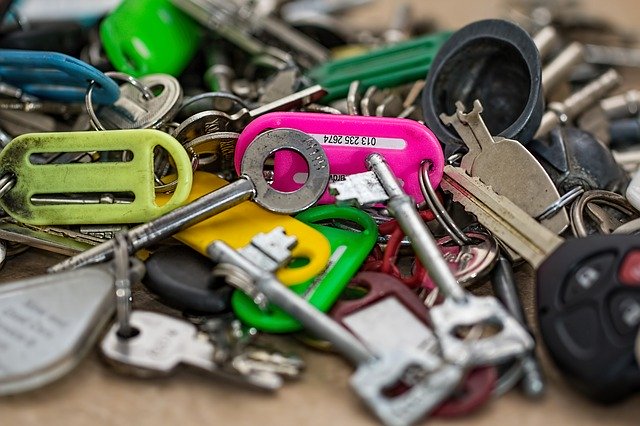
03 Jun Managing keys and locks
Organising keys, locks and remote controls is a very important part of the sign-up process for a new lease. Don’t leave this until the last minute, as a few things need to be done to make sure you are managing your risk and complying with the law.
Before sign-up
Are they all working? Make sure all the locks, keys and remotes work before the tenants move in. This will be used as the bench mark at the end of the lease.
Have you got enough keys? You must provide one full set of keys with the lease and an access key for every other tenant. An access key might be a key for the front door only. If there are remote controls for the garage door, you do not have to provide one for each tenant unless that is the only way to access the property.
Always keep a full set of keys and a remote yourself.
Have you got a record? Take a photograph of all the keys and remotes you are giving to the tenant. The best way to do this arrange the keys and remotes on a sheet of paper. Group them together eg. all the front door keys together, all the window lock. Label the paper and take the photo. Print this record for use at signup.
At sign-up Have the tenants sign and date your key record sheet. When the tenants vacate, they will have to produce all of the keys and remotes recorded on the key sheet–allowing for lock changes etc.
It is also a good idea to give the details of your preferred locksmith to the tenant when they sign for the keys. They can contact the locksmith should they ever be locked out of the property. It is not unheard of for a tenant to call a landlord in the middle of the night asking fora spare key because they’ve been locked out
During the lease
Lost keys. The tenant is responsible for replacing lost keys and remotes. If you organise the replacement, say for a lost garage door remote, then issue an invoice to the tenant for reimbursement. Do not wait until the end of the lease.
Damaged keys, locks and remotes. Always check the condition of the locks during your routine inspections. Assuming you made sure they were all working at the start of the lease, the tenant is responsible for making sure they remain that way. Don’t allow the tenant to say they will fix the damage when they move out. Insist it be done immediately. You may have to issue aBreach Notice to achieve this.
The exception would be an old lock that has succumbed to “fair wear and tear”. In this case, you as landlord are responsible for fixing it. It should be repaired immediately.
Changing the locks. Basically, a tenant cannot change locks without the owner’s permission. Such a change would usually be at the tenant’s expense. However, special circumstances may justify a tenant doing this prior to seeking a landlord’s approval. For example, if the tenant is facing a situation of family violence and needs to ensure their safety.
End of the lease
First, make sure everything is in good work order (fair wear and tear excepted)when you do the exit condition report.
Then, when the tenants hand over the keys, make sure the items they return match the key record sheet from signup.
You are entitled to charge for any replacements. There are two ways to do this. Either,get the tenants to have the necessary keys cut before you sign the bond refund form.
Or, you have the job done, and use the invoice to make a claim against the bond.



Sorry, the comment form is closed at this time.